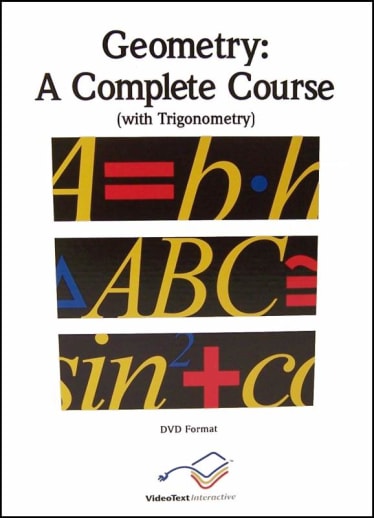With a primary focus on the "why" behind concepts, VideoText takes students on a complete journey through Basic and Advance Geometry using mastery-review techniques to fully explore the structure of geometry, fundamental terms, theorems, and concepts for 111 lessons! Each 4-15 minute video lesson is designed to capture and hold students' attention through the use of computer-generated graphics, animation, and color-sequencing, while engaging them in the complete development and understanding of concepts. After watching the teaching video lesson, students will then complete corresponding print materials designed to solidify mastery for Geometry lessons, including:
- Course Notes designed as a reference for video objectives
- Student Worktexts to build conceptual understanding through definitions, examples, and exercises
- Progress Tests to gauge student mastery with two forms of quizzes and tests for cumulative review
- Step-by-step Solutions Manuals and Instructors Guides for comprehensive answer checks of every daily exercise, quiz & test question
The VideoText program addresses two of the most important aspects of mathematics instruction. First, the inquiry-based video format contributes to engaging students more personally in the concept-development process. Through the use of the pause button, an instructor should require interaction and dialogue on the part of the student. Secondly, the "why" of each incremental concept is explored in detail, using no tricks or shortcuts, ensuring students understand completely.
Because of the unique delivery of the VideoText lessons, students can often study independently, allowing them to cover and comprehend more material in less time. For parents and students who are less comfortable with the prospect of teaching or learning high-school mathematics, VideoText also provides access to their toll-free helpline, ensuring that you are not alone when you need help!

